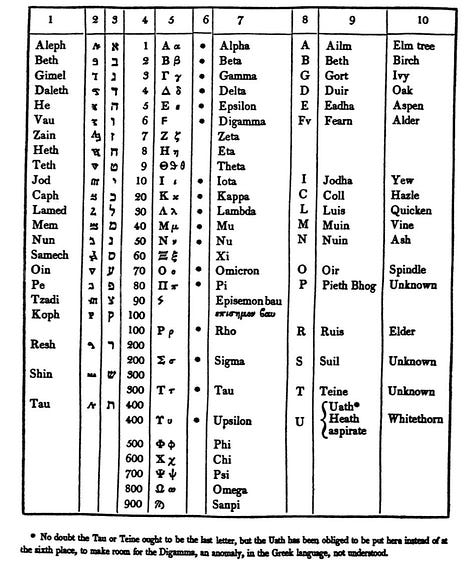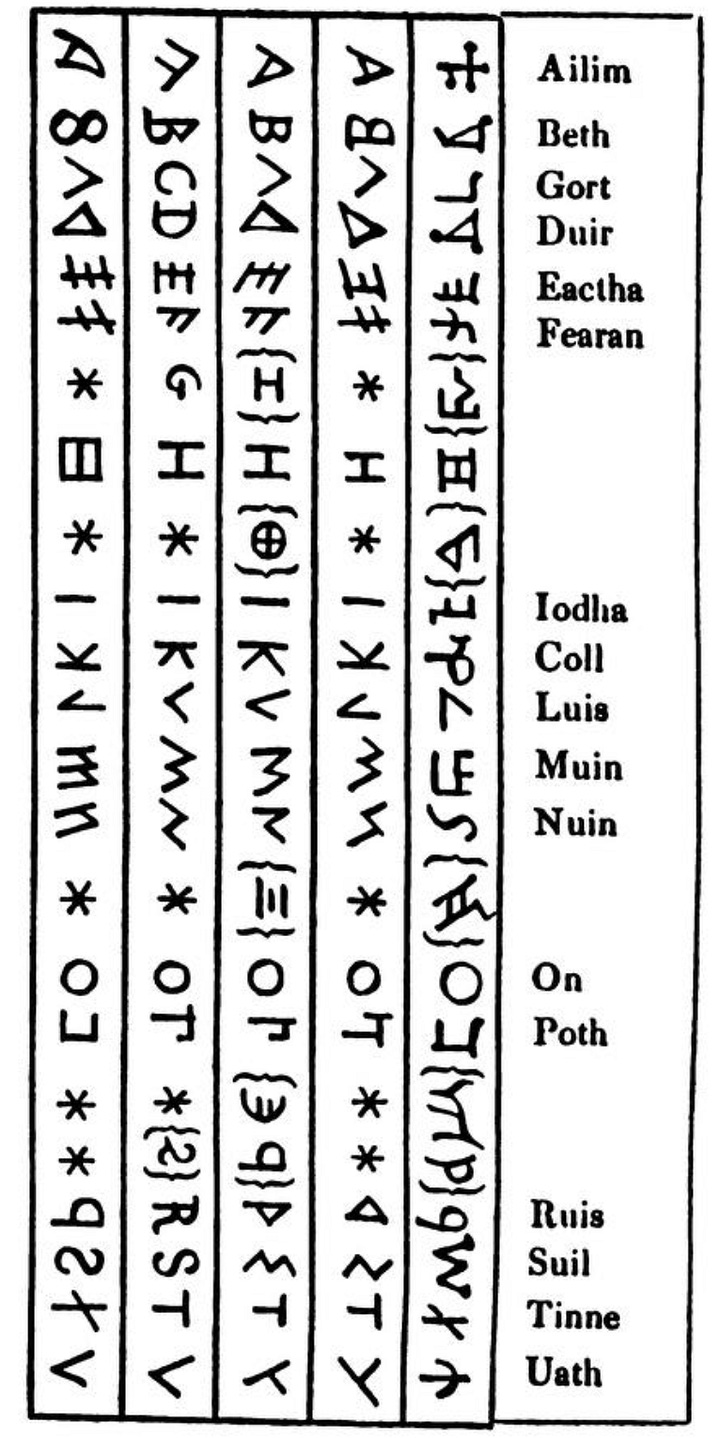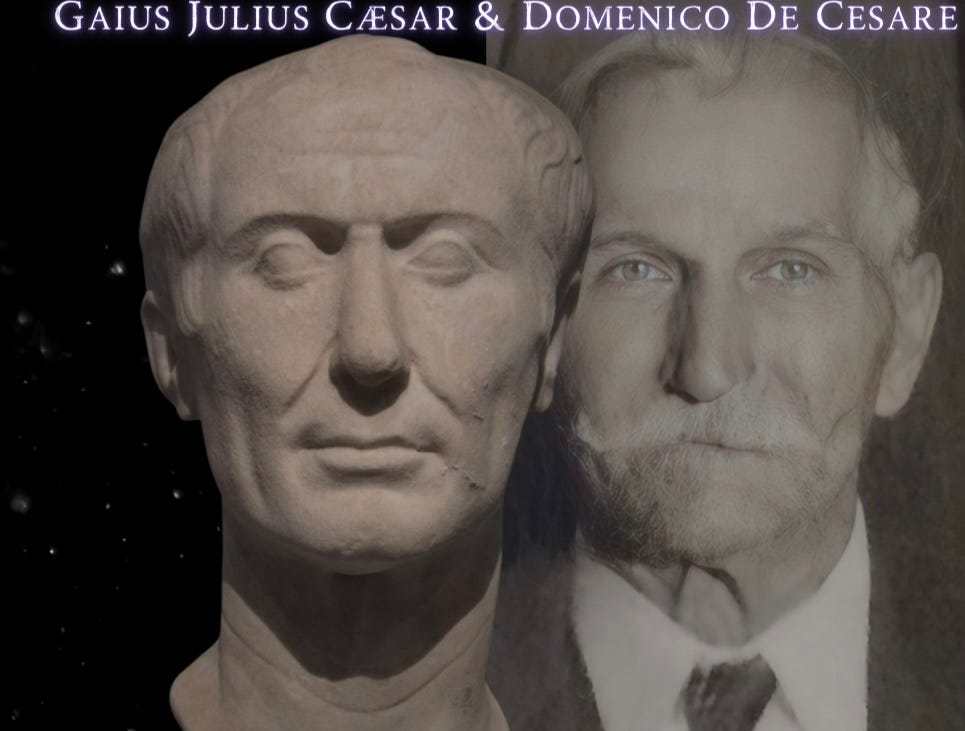There is very little that can be found searching the so-called Amonian, or Ammouneon (Αμμουνεων) radicals. The claim, by the status quo, is generally that the system (my work treats), for mapping out language, originated east of Israel, which is the Kingdom of Ammon. (𐤏𐤌𐤍; Omn; if you can read Etruscan, you can read this Phoenician example, which is how I arrived at the conclusions in The Real Universal Empire, given that nothing in the oriental languages, including Amonian, can be used to translate Etruscan.) Ironically, Omn is similar to Om, sometimes Aum, the essence of the supreme Absolute, consciousness, Ātman, Brahman, or the cosmic world (according to Wiki). It’s a subject that hasn’t been treated well by modern scholars, and is thus difficult to find content on for the English, or even Greek, readers.
Jacob Bryant wrote (Analy. Ancient Myth. p. viii.), “It is mentioned of Sanchoniathon, the most ancient of Gentile writers, that he obtained all his knowledge from some writings of the Amonians. It was the good fortune of Sanchoniathon, says Philo Biblius, to light upon some ancient Amonian records, which had been preserved in the innermost part of a temple, and known to very few. Upon this discovery he applied himself with great diligence to make himself master of the contents: and having, by divesting them of the fable and allegory, with which they were obscured, obtained his purpose, he brought the whole to a conclusion.
I don’t accept this work as authentic because it’s a translation claimed to be preserved by Philo Biblius, but only through the work of Eusebius, a known forger. There is no Phoenician original. That is the ground I stand on until a Phoenician original is produced, or another authentic translation from someone closer to the source is found. I suspect much of the Phoenician narrative is a contrived veil to obfuscate the Etruscan maritime empire.
Bryant wrote (Ib. pp. x, xi.), “As it will be my business to abridge history of every thing superfluous, and foreign; I shall be obliged to set aside many ancient lawgivers, and princes, who were supposed to have formed republics, and to have founded kingdoms. I cannot acquiesce in the stale legends of Deucalion of Thessaly, of Inachus of Argos, and Ægialeus of Sicyon: nor in the long line of princes, who are derived from them. The supposed heroes of the first ages in every country are equally fabulous. No such conquests were ever achieved, as are ascribed to Osiris, Dionusus, and Sesostris. The histories of Hercules, and Perseus, are equally void of truth. I am convinced, and hope I shall satisfactorily prove, that Cadmus never brought letters to Greece: and that no such person existed as the Grecians have described. What I have said about Sesostris and Osiris, will be repeated about Ninus, and Semiramis, two personages, as ideal as the former. There never were such expeditions undertaken, nor conquests made, as are attributed to these princes: nor were any such empires constituted, as are supposed to have been established by them. I make as little account of the histories of Saturn, Janus, Pelops, Atlas, Dardanus, Minos of Crete, and Zoroaster of Bactria. Yet something mysterious, and of moment, is concealed under these various characters: and the investigation of this latent truth will be the principal part of my inquiry. In respect to Greece, I can afford credence to very few events, which were antecedent to the Olympiads. I cannot give the least assent to the story of Phryxus, and the golden fleece. It seems to me plain beyond doubt, that there were no such persons as the Grecian Argonauts: and that the expedition of Jason to Colchis was a fable.”
I’m early into Bryant’s work, but it seems he was affected by the deluge delusion and the system of priestcraft that my work has exposed so thoroughly as the basis of much of the fraudulent history that was imposed. He wrote (Ib. pp. xii, xiii.), “We shall find that the Deluge was the grand epocha of every ancient kingdom. It is to be observed, that when colonies made anywhere a settlement, they ingrafted their antecedent history upon the subsequent events of the place. And as in those days they could carry up the genealogy of their princes to the very source of all; it will be found, under whatever title he may come, that the first king in every country was Noah. For as he was mentioned first in the genealogy of their princes, he was in aftertimes looked upon as a real monarch; and represented as a great traveller, a mighty conqueror, and sovereign of the whole earth. This circumstance will appear even in the annals of the Egyptians: and though their chronology has been supposed to have reached beyond that of any nation, yet it coincides very happily with the accounts given by Moses.”
Keep in mind that Jacob Bryant was writing at a time when the British kings pretended to be descended from Japheth, a son of Noah. It will be determined if the rest of his work is sullied by this nonsense, or if he was just going along with it so that he could produce his findings without persecution. But what caught my eye about this work is how Jacob Bryant seemed to have created the term Amonian radicals, inspired by Sanchoniathon, which means the Amonian radicals that Robert Taylor wrote/spoke of was drawn from this work, written almost a century prior. The reason this is important to me is because the idea of these roots coming from the eastern part of the Mediterranean may be an erroneous conclusion based on Mosaic history, whereas so-called Amonian radicals like Don, signifying Lord, are used by Italians to signify their family patriarch, or Lord, and the ancient languages of Italy are alien to the rest of the world, while simultaneously being the parents of Latin, Celtic, and Sanskrit, yet their alphabets are almost one for one Phoenician. I suggest this is because the systems claimed to originate in the eastern Mediterranean actually originated on the peninsula of Italy and spread to the rest of the world from there. No other culture that I’m aware of uses this so-called Phoenician system. The Don of my family didn’t exactly look Oriental, did he? His last name is Etruscan, not Latin or Greek. The root Esar, was an Etruscan name for the sun (Sol), and Aesar was an Etruscan word for God, affixed with the letter that signifies a centuria (100 soldiers). This tribe or family likely started out as a military outfit, and prior to the Roman Empire, every Caesar who rose to prominence did so through virtue in battle.
The Irish, whose language is demonstrably descended from Sicilian Phoenician, also use the word Aesar to signify God, while the Norse use a slight variant of it: Aesir.
Bryant wrote (Ib. pp. xiv, xv.), “Before I can arrive at this essential part of my enquiries, I must give an account of the rites and customs of ancient Hellas; and of those people, which I term Amonians. This I must do in order to shew, from whence they came: and from what quarter their evidence is derived. A great deal will be said of their religion and rites: also of their towers (the Etruscans were called Tyrrhenians and Tyrsenians by the Greeks, named after their towers: tyrseis), temples, and Puratheia, where their worship was performed. The mistakes likewise of the Greeks in respect to ancient terms, which they strangely perverted, will be exhibited in many instances: and much true history will be ascertained from a detection of this peculiar misapplication. It is a circumstance of great consequence, to which little attention has been paid. Great light however will accrue from examining this abuse, and observing the particular mode of error: and the only way of obtaining an insight must be by an etymological process, and by recurring to the primitive language of the people, concerning whom we are treating. As the Amonians betook themselves to regions widely separated; we shall find in every place, where they settled, the same same worship and ceremonies, and the same history of their ancestors. There will also appear a great similitude in the names of their cities and temples: so that we may be assured, that the whole was the operation of one and the same people. The learned Bochart saw this; and taking for granted, that the people were Phenicians, he attempted to interpret these names by the Hebrew languages; of which he supposed the Phenician to have been a dialect. His design was certainly very ingenious; and carried on with a wonderful display of learning. He failed however: and of the nature of his failure I shall be obliged to take notice. It appears to me, as far as my reading can afford me light, that most ancient names, not only of places, but of persons, have a manifest analogy. There is likewise a great correspondence to be observed in terms of science; and in the titles, which were of old bestowed upon magistrates and rulers. The same observation may be extended even to plants, and minerals, as well as to animals; especially to those, which were esteemed at all sacred. Their names seem to be composed of the same, or similar, elements; and bear a manifest relation to the religion in use among the Amonians, and to the Deity, which they adored. This Deity was the Sun: and most of the ancient names will be found to be an assemblage of titles, bestowed upon that luminary. Hence there will appear a manifest correspondence between them: which circumstance is quite foreign to the system of Bochart. His etymologies are destitute of this collateral evidence: and have not the least analogy to support them.
“In consequence of this I have ventured to give a list of some Amonian terms, which occur in the mythology of Greece; and in the histories of other nations. Most ancient names seem to have been composed out of these elements: and into the same principles they may again be resolved. Hence has arisen the demand, που σω (pou so), which has been repeated for ages. It is my hope, and my presumption, that such a place of appulse may be found: where we may take our stand; and from whence we may have a full view of the mighty expanse before us: from whence also we may decry the original design, and order, of all those objects, which by length of time, and their own remoteness, have been rendered so confused and uncertain.”
Scholars demonstrated the affinity of the Phoenician, Etruscan, and Irish alphabets, as well as their radicals. One could even make the case of the cuneiform being based on the Ogam, should the chronology of cuneiform inscriptions reveal that system to be a modern invention. The number one detail that proves my suspicion, and the number one obstacle that cannot be overcome, is how all these cultures in the Orient use this system that is embedded in the Etruscan and ancient Italian languages, yet none of them have affinity or can be used to translate the alien Italian ones, specifically, how Hieroglyphics and Coptic have affinity to Hebrew, Ethiopian, etc., yet are all Greek-based, and all the ancient Greek abecadaria were found in Italy and turned out to be ancient Italian, or Etruscan, not Greek. Greek uses so much of this system as to be nearly identical, yet has zero affinity to Etruscan, which isn’t Indo-European like Greek is. In fact, all of this indicates these systems of mapping out language descended from ancient Italy, and that Etruscan and subsequently Latin, Celtic, and Sanskrit, are older than Greek, Hebrew, the Hieroglyphics, and even Sumerian. It is a controversial conclusion but it is the one that I will arrive at until these issues can be resolved, which they cannot be thus far. None of you can translate Etruscan without using the remnants of its words found in Latin. The following demonstrates the mathematical impossibility of the Irish just happening to use an almost identical alphabet as the Phoenicians, and subsequently other eastern alphabets, by mere coincidence.





William Betham wrote (Etru. Celt. p. 10.) “It has been said that this language was Hebrew, or had a strong affinity to it; but the best Hebraists have tested it without success, for the results have not enlightened the world. The few existing translations through the Hebrew are scarcely vouched by their authors. If the Hebrew and Phœnician were sister tongues the affinity would be palpable and universal, not confined to a few words or sentences. The Hebrew has been preserved without change with the greatest care and anxiety, and therefore ought to be found identical, if at all akin to the Phœnician. The Celto-Etruscan has not only an affinity, but its similarity is almost universally applicable to every Phœnician and Etruscan inscription to which it has been applied, and is, therefore, the true key, every division of which fits the words, and opens the long hidden treasure to our view.”
Had I never studied Phoenician, I’d still be able to read certain words because some of the letters are the same as Etruscan. Bryant correctly identified the system of priestcraft, found all over the world, as corresponding to the sun, or as I call it: Sunscript. As a reminder, he wrote, “Their names seem to be composed of the same, or similar, elements; and bear a manifest relation to the religion in use among the Amonians, and to the Deity, which they adored. This Deity was the Sun: and most of the ancient names will be found to be an assemblage of titles, bestowed upon that luminary.”
For those of you interested in learning this ancient system and how it was used in all religions, as well as to fabricate history, or at least to name individuals that rose to prominence, invest in the Spirit Whirled series, and then The Real Universal Empire.







Become a member to access the rest of this article.
Keep reading with a 7-day free trial
Subscribe to Ancient History, Mythology, & Epic Fantasy to keep reading this post and get 7 days of free access to the full post archives.






